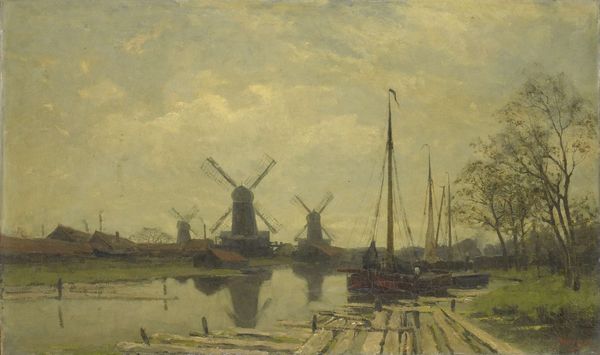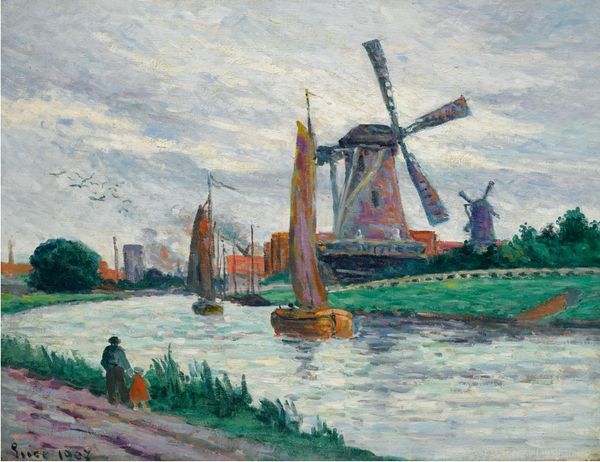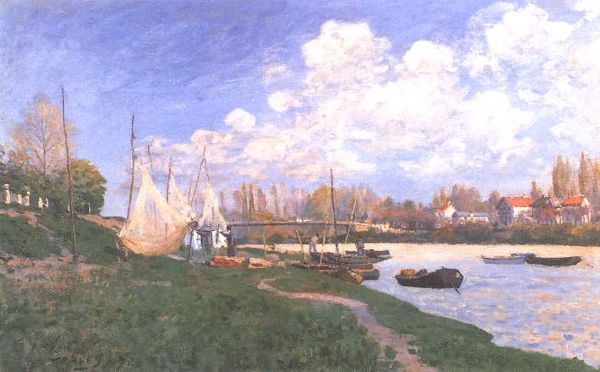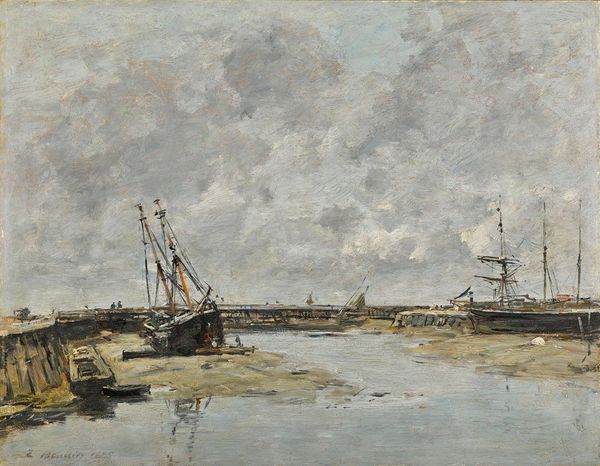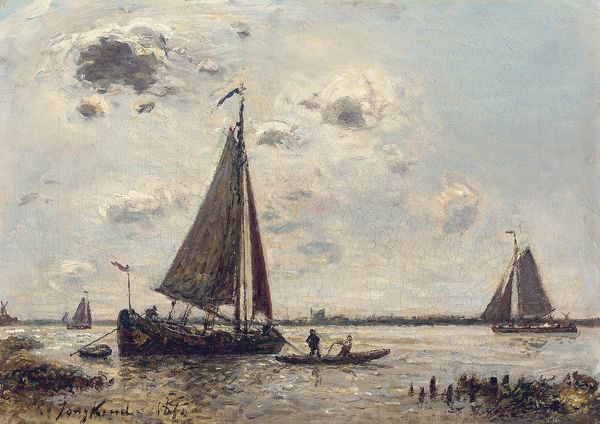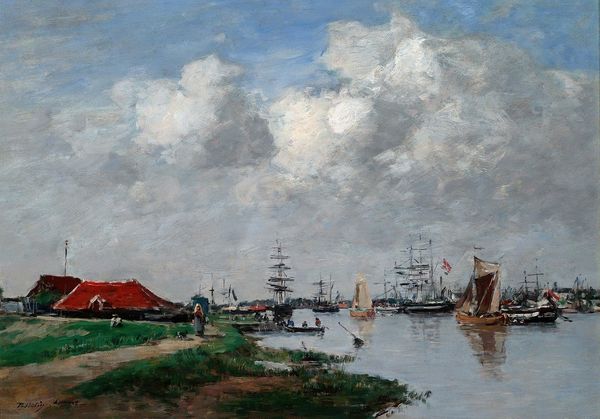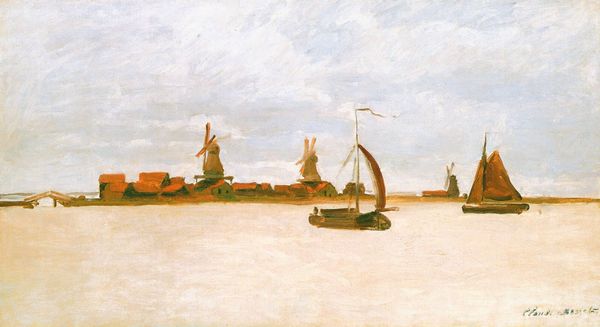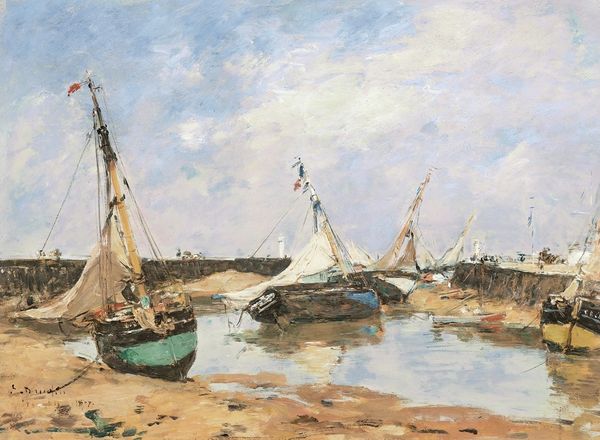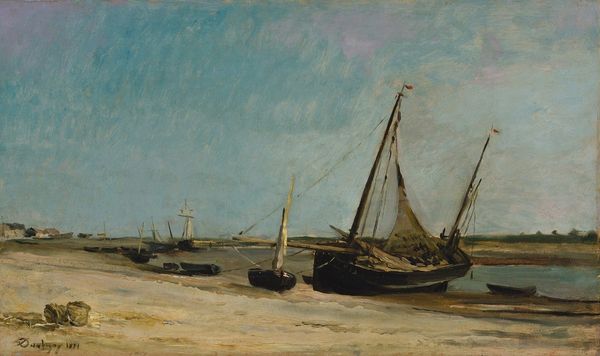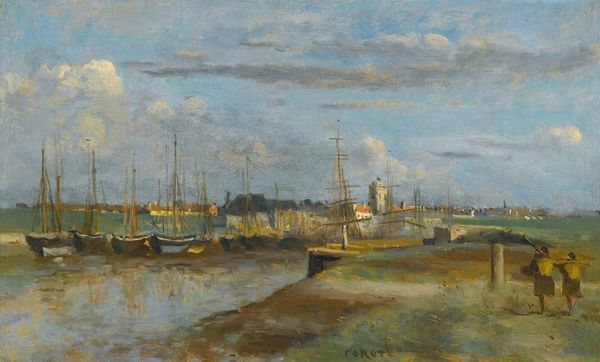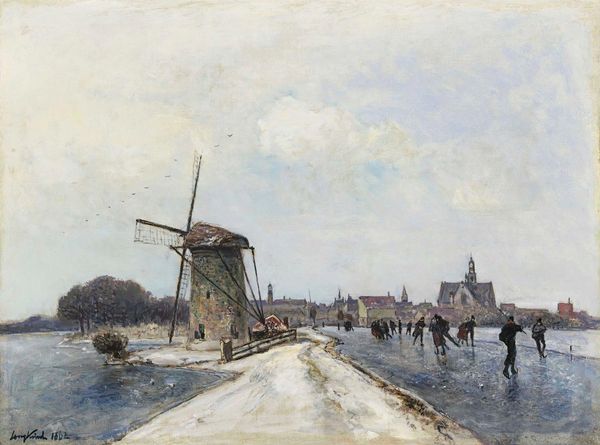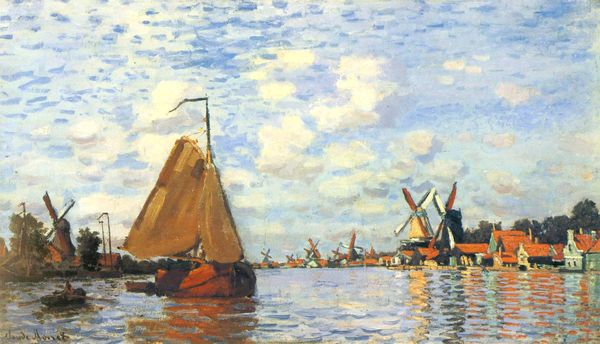
painting, plein-air, oil-paint, impasto
#
painting
#
impressionism
#
plein-air
#
oil-paint
#
landscape
#
impressionist landscape
#
oil painting
#
impasto
#
watercolor
Copyright: Public Domain: Artvee
Curator: Here we have Claude Monet's "Un Moulin À Zaandam," painted in 1871. Editor: Immediately, it evokes this stillness, doesn't it? A muted calm. The light is soft, almost grey, and it's like the scene is holding its breath. Curator: Absolutely. It’s important to consider the historical context. Monet painted this during a time of significant political and social upheaval in France. After the Franco-Prussian War, many artists, including Monet, sought refuge elsewhere. Editor: So, this rather serene Dutch landscape becomes a kind of refuge, a temporary escape from the turmoil. I feel that! And the windmill itself is so…stolid, a presence that grounds the entire piece. Curator: Precisely. The choice of Zaandam, a place associated with industry and commerce, but rendered here in such a peaceful way, speaks to a desire for stability. Windmills in Dutch art are often symbols of national identity, of claiming territory and mastering the environment. Editor: Right, it's not just a pretty picture. But also, I love how the impasto catches the light. Those thick strokes of paint make the whole scene feel alive, even in its quietness. It’s not a photographic rendering; it's about capturing the feeling of being there. Did he paint this *in situ*? Curator: Indeed. This exemplifies Monet's embrace of "plein-air" painting—working outdoors, directly from nature, which became a hallmark of Impressionism. It’s really worth noting how this approach was pretty radical at the time, defying traditional academic practice. The brushstrokes embody that revolutionary fervor. Editor: There’s a tenderness about this piece, a sensitivity. And maybe that softness, that muting, is its power. Like whispering a revolution instead of shouting one. Curator: I concur. Through Monet's deliberate rendering of place, identity, and technique we can explore a multifaceted understanding of not only Monet's experience as an artist during this period, but reflect upon our own placement in the world and society's influence on that reflection. Editor: So, while at first glance it’s just a charming landscape, there’s actually this quiet, subversive energy humming beneath the surface. I’ll never look at a windmill the same way again.
Comments
No comments
Be the first to comment and join the conversation on the ultimate creative platform.

